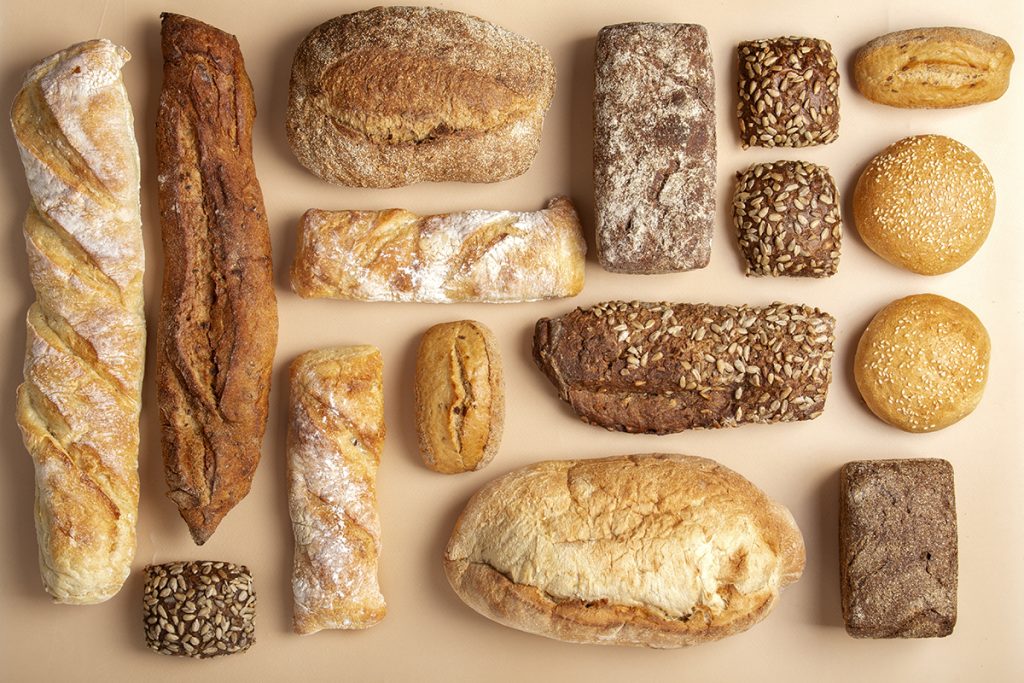Explore the 8 most nutritious varieties of bread
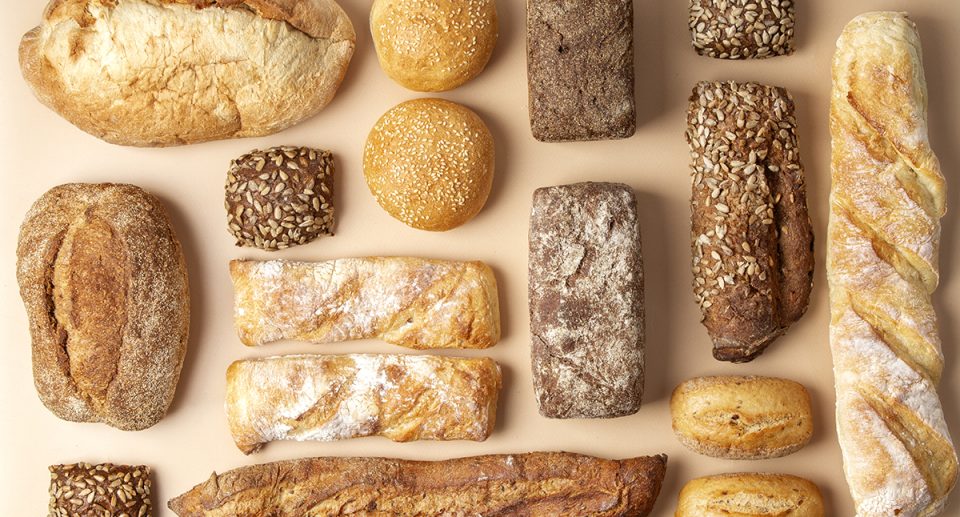
Carbohydrates, commonly referred to as carbs, constitute sugar molecules and represent one of the primary sources of nutrients alongside fat and protein. Our body heavily relies on carbs for energy, particularly for the brain and nervous system. But how do we obtain these vital carbohydrates?
Carbs are obtained through three primary types: sugars (naturally present in fruits and added to processed foods), starches (found in foods like bread, potatoes, and pasta), and fiber, which is the non-digestible component of carbs crucial for maintaining optimal gut and heart health, as well as steady blood sugar levels.
Bread emerges as an excellent choice for obtaining carbohydrates due to its versatility and widespread availability. Continue reading to discover more about the healthiest varieties of bread options and how to select a nutritious loaf for your dietary needs.
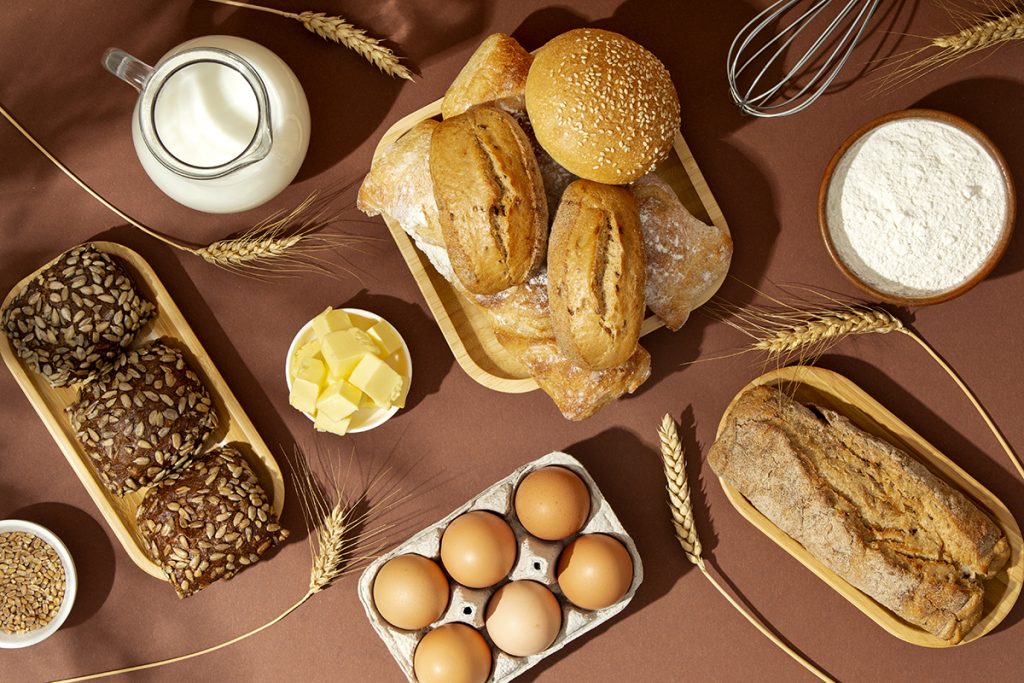
01. Sprouted grain bread
Bread made from sprouted grains utilizes whole grains that have undergone controlled sprouting. Ordinarily, grains remain dormant, but sprouted grains have initiated the sprouting process. Including whole grains in a balanced diet can bolster digestive health, diminish the risk of heart disease, and aid in weight management.
With sprouted grains, their nutrients become more readily available, enhancing absorption. Additionally, sprouted grains boast elevated levels of vital amino acids. Amino acids serve as the fundamental building blocks of proteins, and essential amino acids, indispensable for bodily functions, must be sourced from food.
02. Whole wheat bread
Whole grain varieties of bread incorporate all components of the grain. The bran, outer layer, harbors antioxidants, fiber, and B vitamins. The germ is abundant in B vitamins, minerals, and beneficial fats. Meanwhile, the endosperm furnishes starchy carbohydrates, protein, and modest amounts of vitamins and minerals.
In contrast, refined grains undergo removal of their bran and germ, leaving behind solely the starchy endosperm. Although enrichment of refined grains is undertaken, it only replaces a fraction of the numerous lost nutrients. Consequently, dietary guidelines advocate for half of grain intake to be derived from whole grains.
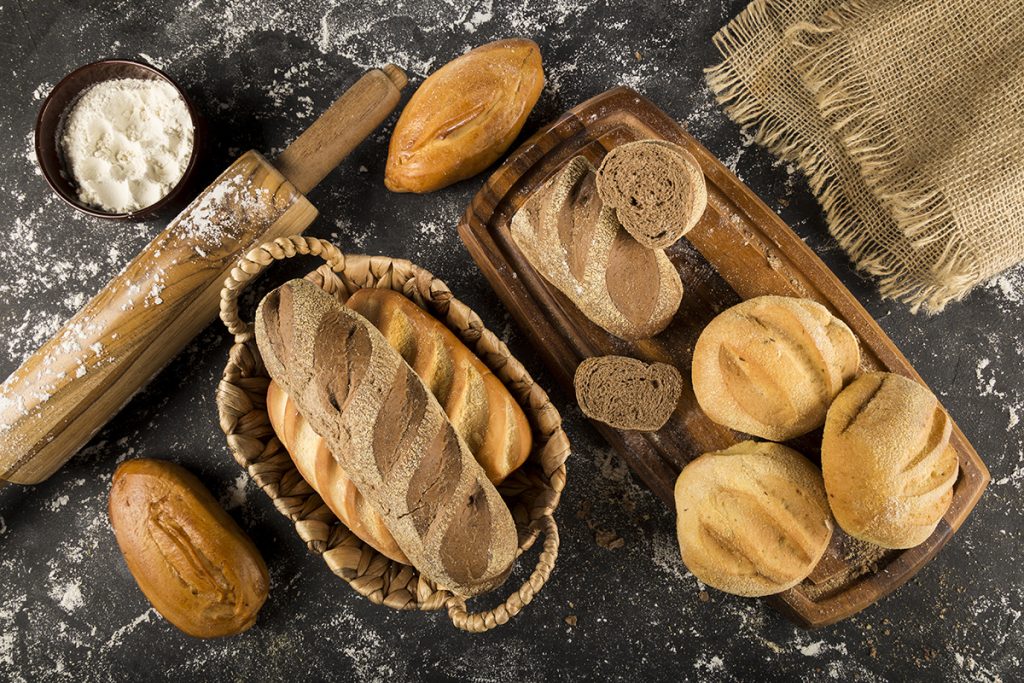
03. Whole grain rye bread
Rye bread, derived from rye, a variant of wheat, contains a substantial fiber content within its endosperm, not confined to the bran. Moreover, the fiber type in rye facilitates rapid satiety, promoting a sensation of fullness.
Due to its rich fiber content, rye products typically exhibit a lower glycemic index (GI) compared to wheat and many other grain products. Opting for low GI foods proves advantageous in efficiently managing blood sugar levels, particularly for individuals with diabetes.
It’s essential to note that the term ‘rye’ on bread packaging does not necessarily denote a whole grain bread. To ensure selection of a whole grain variant, scrutinize the ingredients for ‘whole rye’ inclusion.
04. Whole wheat bread with seeds
Bread crafted from whole grains and seeds, such as flaxseed, pumpkin seed, or sunflower seed, is typically fashioned from whole wheat or sprouted whole wheat. The incorporation of seeds can enhance both the flavor and texture of the bread, imparting a chewy, nutty taste that appeals to many. Moreover, seeds contribute to elevating the bread’s protein and fiber content.
Ensuring an adequate fiber intake in one’s diet is advisable as it facilitates satiety, aids in weight management, alleviates constipation, reduces cholesterol levels, and maintains stable blood sugar levels. As a guideline, 14 grams of fiber per 1,000 calories consumed are recommended. Opting for varieties of bread with increased fiber content can assist in meeting daily fiber needs.
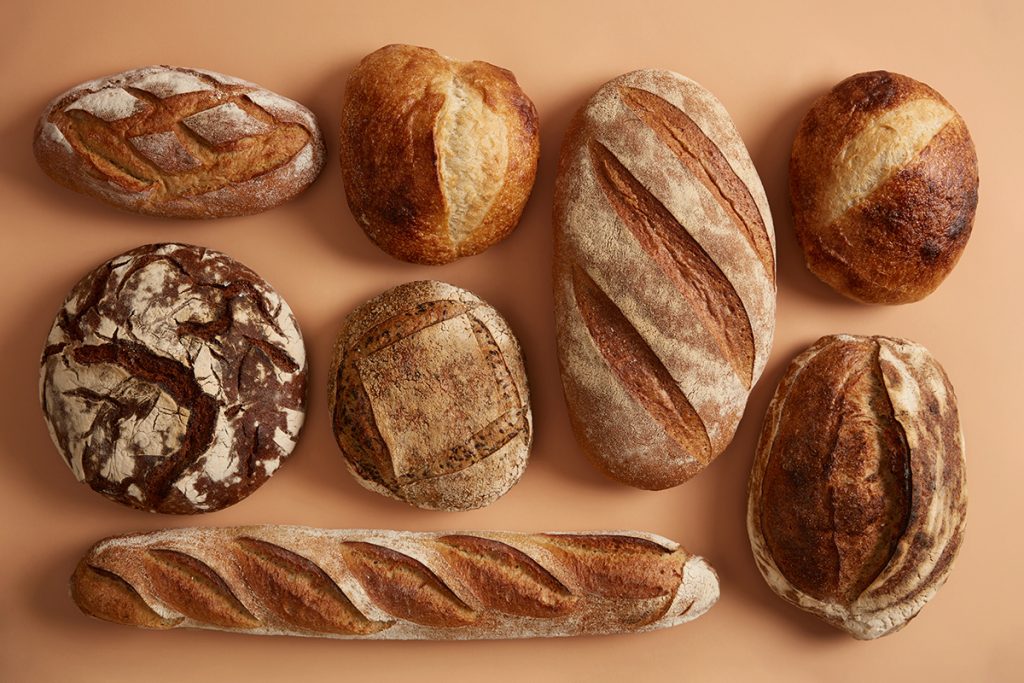
05. Gluten-free whole grain bread
Designed for individuals afflicted with celiac disease or gluten sensitivity, gluten-free whole grain varieties of bread are formulated sans gluten-containing ingredients. Gluten, a protein variant present in specific grains like wheat, rye, and barley, must be avoided by those with celiac disease or gluten sensitivity to prevent adverse reactions.
Typically, gluten-free whole grain varieties of bread feature starches like brown rice, tapioca starch, and potato starch as primary constituents. They may incorporate gluten-free grains such as millet, teff, and quinoa. Additionally, some variations may include seeds like flax or sesame.
06. Oat bread
Oat bread emerges as a health-conscious choice owing to the numerous benefits associated with oats. Beta-glucan, a fiber variety found in oats, serves as the key compound aiding in cholesterol reduction and blood sugar level management. Consumption of oats has also demonstrated favorable impacts on both the immune system and gut microbiota.
Predominantly, oat varieties of bread employs enriched wheat flour or whole grain flour, such as whole wheat or whole barley, as its primary flour component. Subsequently, water and oats constitute the subsequent ingredients.
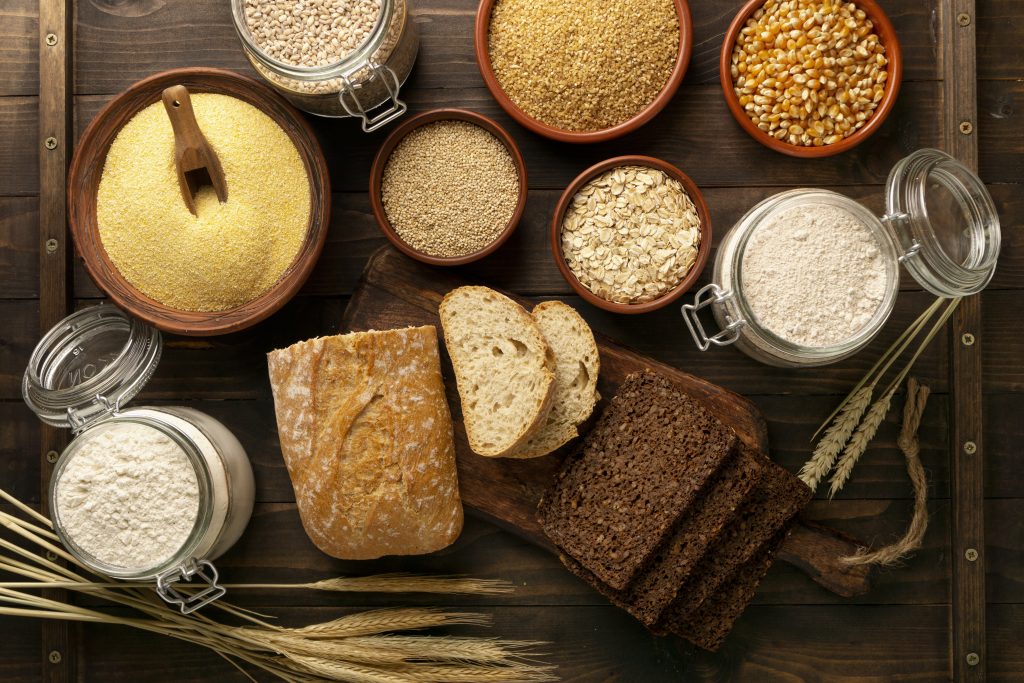
07. Sourdough bread
Sourdough varieties of bread diverge from conventional bread by eschewing commercial yeast. Instead, it undergoes a fermentation process utilizing naturally occurring bacteria and yeast present in the flour. This process yields a distinctive tangy and chewy texture while extending the bread’s shelf-life.
These varieties of bread holds potential benefits for individuals grappling with digestive issues like irritable bowel syndrome. Additionally, its lower glycemic index (GI) compared to white bread offers advantages for blood sugar regulation.
08. Multigrain bread
Comprising two or more distinct types of grains like wheat, barley, millet, and quinoa, multigrain varieties of bread presents a diverse grain profile. When crafted from 100% whole grains, multigrain bread can offer heightened fiber content.
However, discerning whether a multigrain bread utilizes whole grains can prove challenging. To ascertain its whole grain composition, scrutinize the label for terms like ‘whole wheat’ or another whole grain listed as the primary ingredient.
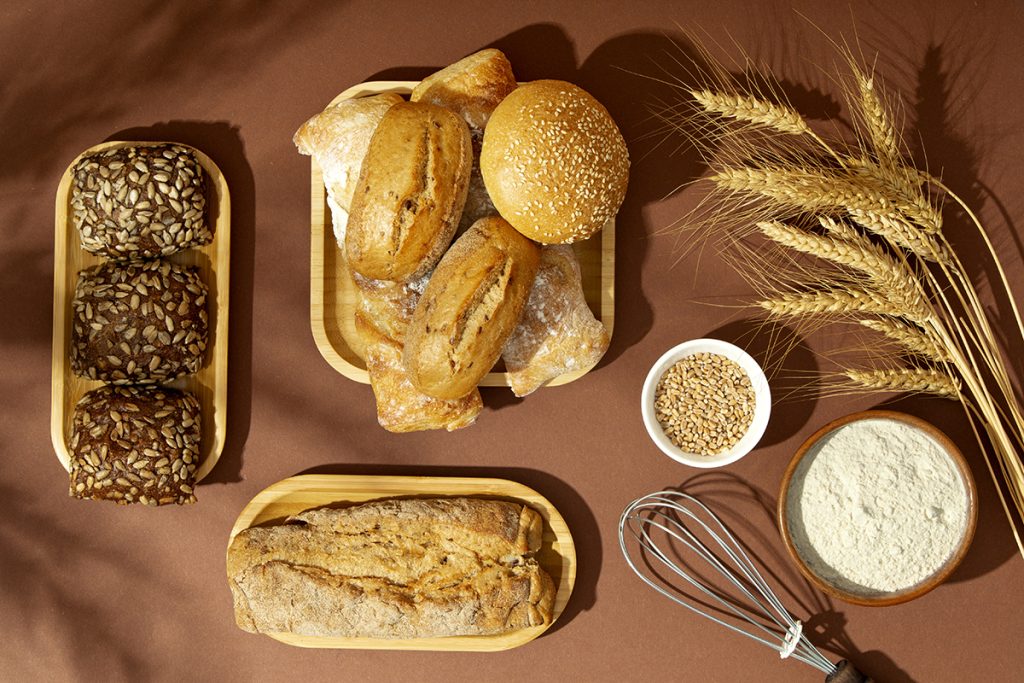
How to identify a healthier bread option
When navigating the aisles during your shopping trips, here are some guidelines to consider when selecting a healthier bread option. It’s essential to compare various choices to pinpoint those boasting the most favorable nutritional composition.
- Examine the ingredient list: Prioritize products where ‘whole wheat’ or another whole grain ranks first in the list of ingredients. Avoid selections where refined grains, like ‘enriched wheat flour,’ hold precedence.
- Evaluate the fiber content: Aim for a minimum of 2-3 grams of fiber per slice.
- Monitor added sugars: Refrain from varieties of bread containing added sugars, which are often listed as ‘sugar,’ ‘high fructose corn syrup,’ or ‘honey.’
- Embrace healthy additions: Incorporating supplementary ingredients such as seeds, nuts, and legumes (beans, peas, lentils) can enhance both the nutritional profile and flavor.
Explore the most nutritious varieties of bread conclusion
This comprehensive compilation of the most nutritious varieties of bread offers choices to suit every taste, ranging from traditional whole-wheat varieties to enticing loaves adorned with flavorful seeds, and it even accommodates gluten-free requirements.
Utilize our convenient shopping guide to navigate through the bread section. It’s important to remember that while healthy varieties of bread are a valuable component, it’s just one aspect of maintaining a balanced diet and practicing mindful eating habits!
